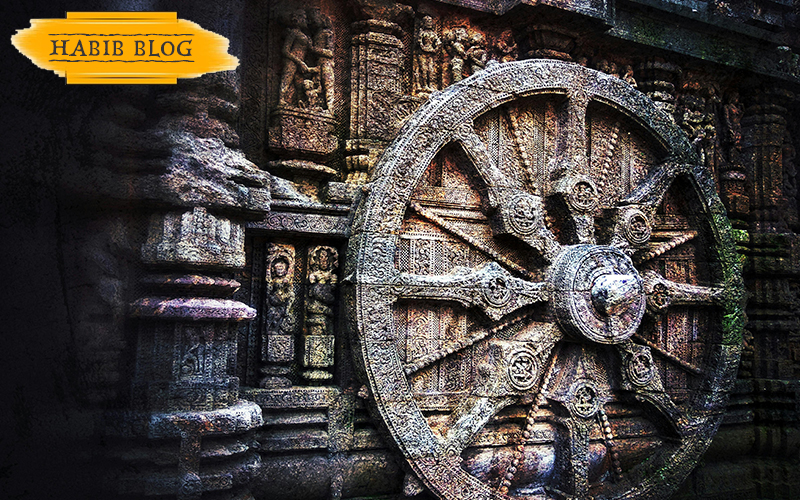Introduction
India, a land steeped in history and culture, boasts a narrative as diverse as its people. From the ancient civilizations of the Indus Valley to the grandeur of the Mughal Empire, the history of India is a tapestry woven with threads of conquest, innovation, and resilience. In this article, we embark on a journey through time, exploring pivotal moments and influential figures that have shaped the destiny of this subcontinent.

1 India’s Ancient Civilizations
India’s historical roots run deep, with evidence of early human settlements dating back to the Stone Age. The subcontinent witnessed the rise of several ancient civilizations, including the mighty Indus Valley Civilization. Flourishing around 3300 BCE, this Bronze Age civilization boasted sophisticated urban planning, advanced drainage systems, and a thriving trade network. Delve into the mysteries of Harappa and Mohenjo-Daro, two of the largest cities of the Indus Valley, and uncover the secrets of their demise.
2 The Vedic Period: Cradle of Hindu Civilization
Transitioning from the ancient to the Vedic period, India witnessed the emergence of the Vedas, sacred texts that laid the foundation for Hinduism. Explore the Rigveda, the oldest of the four Vedas, and delve into its hymns, rituals, and philosophical insights. Discover the societal structure of early Vedic society, characterized by the varna system and the importance of dharma (duty) in shaping individual conduct.
3 The Maurya Empire: From Ashoka to Unification
The Maurya Empire, spanning from 322 to 185 BCE, marked a significant chapter in India’s history under the visionary leadership of Emperor Chandragupta Maurya and his illustrious grandson Ashoka. Trace the empire’s expansion across the Indian subcontinent and beyond, and examine Ashoka’s transformation from a ruthless conqueror to a proponent of non-violence and religious tolerance.
4 The Golden Age of Indian Culture: Gupta Dynasty
Enter the golden age of Indian culture with the Gupta Dynasty, a period marked by remarkable achievements in art, science, and literature. Explore the contributions of luminaries such as Kalidasa, the playwright and poet known for his masterpieces like “Shakuntala” and “Meghaduta”. Delve into the advancements in mathematics, exemplified by the pioneering work of mathematician Aryabhata.
5 Islamic Influence and the Delhi Sultanate
The arrival of Islam in India during the 7th century CE ushered in a new era of cultural synthesis and political upheaval. Witness the establishment of the Delhi Sultanate by the Ghurid Dynasty in 1206, marking the beginning of Muslim rule in the Indian subcontinent. Explore the architectural marvels of the Qutub Minar and the Alai Darwaza, enduring symbols of Islamic craftsmanship.
6 The Mughal Empire: Splendor and Legacy
The Mughal Empire, founded by Babur in 1526, stands as a testament to India’s syncretic heritage and artistic brilliance. Traverse the grandeur of Akbar’s reign, characterized by religious tolerance and administrative reforms, and marvel at the architectural wonders of the Taj Mahal and the Red Fort. Explore the decline of the Mughal Empire and the subsequent rise of regional powers.
7 Colonialism and the British Raj
The arrival of the British East India Company in the 17th century marked the beginning of British colonial rule in India. Trace the trajectory of British dominance, from the battle of Plassey to the uprising of 1857, known as the Indian Rebellion. Explore the socio-economic impact of British imperialism, from the exploitation of resources to the introduction of railways and telegraph lines.
8 India’s Independence Movement
The dawn of the 20th century witnessed the rise of India’s independence movement, spearheaded by visionaries such as Mahatma Gandhi, Jawaharlal Nehru, and Subhas Chandra Bose. Follow the non-violent protests, civil disobedience campaigns, and sacrifices that culminated in India’s independence from British rule on August 15, 1947. Explore the partition of India and the birth of Pakistan, accompanied by communal violence and mass migrations.
9 India’s Post-Independence Era
With independence came the arduous task of nation-building, as India grappled with economic challenges, social disparities, and geopolitical tensions. Trace the trajectory of India’s post-independence era, from the Nehruvian era of socialist policies to the economic liberalization of the 1990s under Prime Minister Narasimha Rao. Explore India’s emergence as a global powerhouse in the fields of technology, space exploration, and pharmaceuticals.
10 Cultural Heritage and Diversity
India’s rich cultural heritage is a mosaic of traditions, languages, and customs, reflecting the diversity of its people. Delve into the classical dance forms of Bharatanatyam, Kathak, and Odissi, each steeped in mythology and symbolism. Explore the vibrant festivals of Diwali, Holi, and Eid, which serve as celebrations of unity amidst diversity.
11 India’s Contribution to World Civilization
India’s influence extends far beyond its borders, shaping world civilization through its contributions in various fields. Explore the ancient University of Nalanda, a center of learning and intellectual exchange, attracting scholars from across the globe. Discover the legacy of Mahatma Gandhi, whose philosophy of non-violence inspired civil rights movements and leaders worldwide.
12 Challenges and Opportunities
Despite its rich history and cultural heritage, India faces a myriad of challenges in the 21st century, from poverty and corruption to environmental degradation and communal tensions. However, amidst these challenges lie opportunities for growth, innovation, and social change. Explore initiatives such as Digital India and Swachh Bharat Abhiyan, aimed at harnessing technology and promoting cleanliness and sanitation.
13 Future Prospects and Global Leadership
As India strides into the future, it stands poised to assume a leadership role on the global stage, leveraging its demographic dividend, entrepreneurial spirit, and cultural capital. Explore India’s aspirations for sustainable development, renewable energy, and inclusive growth, shaping a brighter tomorrow for generations to come.
